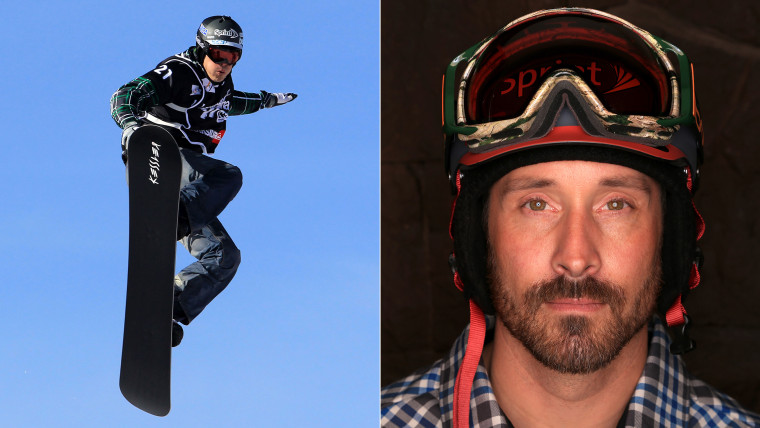Seth Wescott may be 37 years old, but he’s not letting his age slow him down one bit. As the only person to ever win gold in snowboardcross, the two-time Olympian is hoping to defend his title in Sochi — despite getting over a knee injury. Here, he tells TODAY.com a little bit about how he’s been training, and shares his tips for some moves you can do at home.
Favorite muscle group or body part:
Lats, shoulders and arms. “For my sport, you can set yourself up for victory by your start, so lat strength, arm strength and shoulder strength is huge.”
His moves:
First, to strengthen his lats, he uses a resistance band wrapped around a bar and pulls both arms back in quick snaps to simulate how a snowboarder uses momentum to get out the gate.
He also demonstrated a series of exercises to strengthen the shoulders using dumbbells, including lateral raises, front raises, upright rows and more. Get more specific instructions on doing the whole circuit.
Workout routine:
“Typical years, for offseason training, the bulk of it is gaining your cardiovascular base. I mountain bike or run. Mountain bike workouts for me are two to three hours, five to six days a week when I’m injured.”
“The difference between snowboardcross and other alpine ski events is the number of runs we have to do in a day. We’ve got six competition runs in a day in the Olympic format, versus downhill where they do one. So the ability to recover between your heats, you need to have your cardiovascular strength. All the weight training and everything is basically there for injury prevention. We know we’re going to take some pretty horrific crashes during the year, so we need to be strong to be able to get back up.”
To that Wescott adds core lifts, bench press, different row exercises or pull-ups as well as “anything to help you effectively move your body weight,” Wescott says.
Most hated workout move:
“I hate doing typical core stuff, so the last couple years I really got into stand-up paddleboarding. It’s something I can do to train the core without the monotony of crunches or sit-ups.”
Diet secrets:
“I’ve been super fortunate, I’ve got an active metabolism and I can kind of eat whatever, whenever and it doesn’t affect me!” (If only we were so lucky.)
“But this year, with the injury, there was a big period of time I couldn’t do the cardio so I got a little heavier. I kind of find there’s an optimal weight for me, so I made some changes. This fall I’d have smoothies for breakfast with bananas, blueberries, and Greek yogurt mixed in – so I was getting the protein, but feeling healthier because I was cutting out some of the grains. I do eat a lot of pasta midday with some kind of protein, to give me energy for the rest of the day, and then vegetables and protein at night.”
